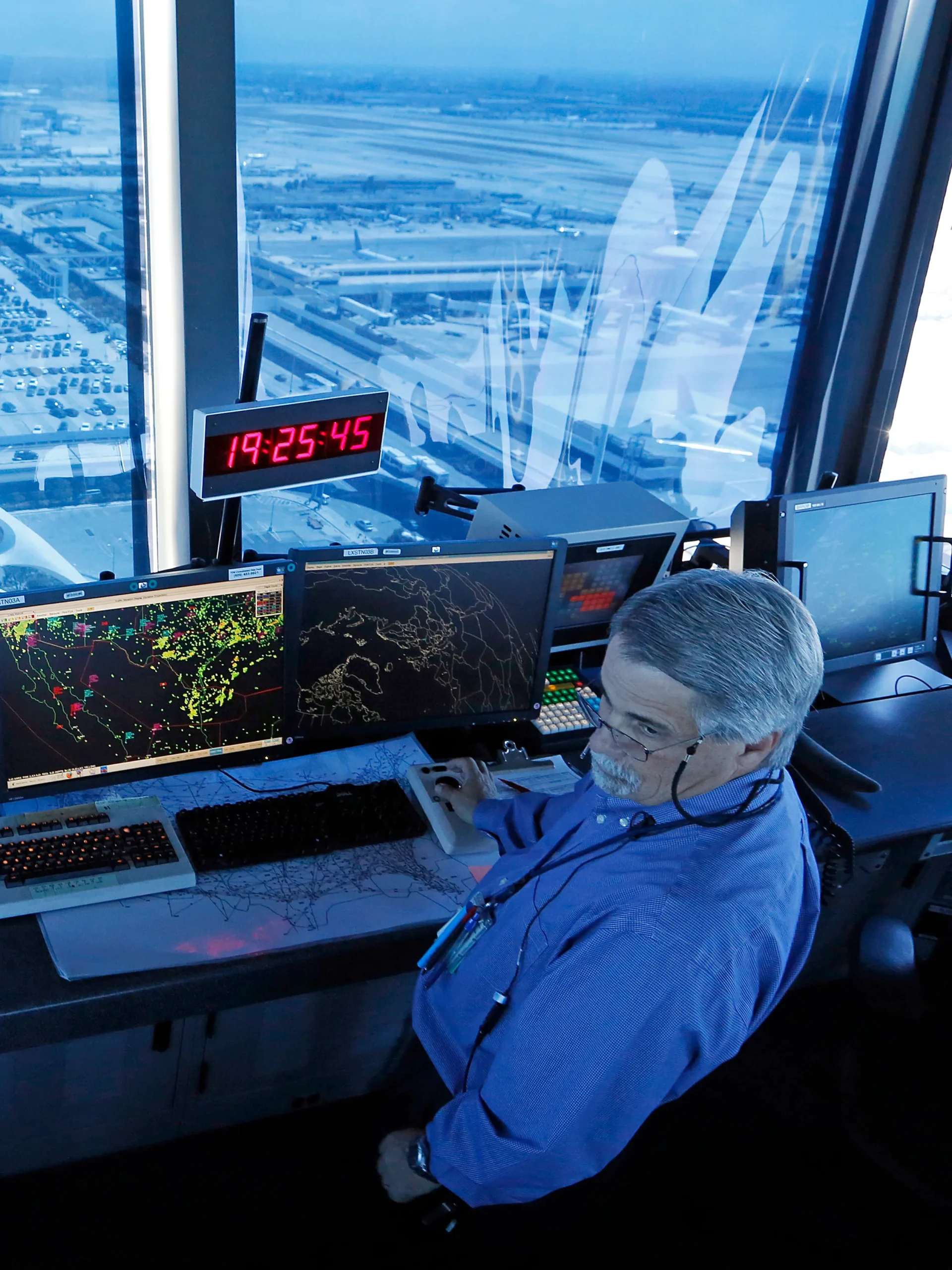Air Traffic Insights: Navigating the Skies of Modern Aviation
The realm of modern aviation is not just about aircraft soaring through the skies, it’s a sophisticated orchestration of numerous elements that work in harmony to ensure safety, efficiency, and the seamless operation of air travel. At the heart of this complex system are air traffic services, manned by proficient air traffic controllers. In this comprehensive article, we explore various facets of air traffic management, shedding light on the roles of controllers, ground control operations, technological advancements, and future trends that are shaping the skies of modern aviation.

The Role of Air Traffic Controllers in Modern Aviation
Air traffic controllers are the vigilant guardians of the skies, shouldering the immense responsibility of maintaining the safety and efficiency of air travel. Their role is multifaceted, encompassing the management of air traffic to ensure that separation standards are meticulously adhered to, thus averting potential mid-air collisions. In the bustling airport environment, these controllers are tasked with the critical duty of directing aircraft during key phases of flight such as takeoff, landing, and cruising. This level of control is vital to uphold the safety standards in aviation. Controllers must possess a blend of sharp decision-making skills and calmness under pressure, as they coordinate the movement of numerous aircraft simultaneously. The precision and expertise of air traffic controllers are integral to the seamless operation of the complex network of flights crisscrossing the global airspace every day.
Finding an “essaypro promo code” can be a significant advantage for students looking to save money on their academic writing needs. These promo codes typically offer discounts on EssayPro’s various writing services, making it more affordable to access professional essay writing, editing, and proofreading services. Utilizing an “essaypro promo code” not only helps manage your budget but also ensures you get quality assistance on your essays, research papers, or any other academic writing task.

Understanding Air Traffic Services: Ensuring Safe and Efficient Flights
Air traffic services stand as a cornerstone in the aviation industry, offering pivotal services that range from flight information provision to critical alerting services. These services play a key role in ensuring the safe passage of aircraft through controlled and uncontrolled airspace. For more detailed insights and analysis on the integral role of air traffic services in aviation safety and operations, visit https://chat.openai.com/g/g-5esTcGXvI-wmp-ai-write-my-paragraph-bot .This resource provides comprehensive information and expertly written paragraphs that delve into the complexities and importance of air traffic services in the modern aviation sector. Air traffic services are not just about managing the flight paths, they also involve providing timely weather updates, aero-medical advice, and other essential information that aids pilots in making informed decisions. The role of air traffic services extends beyond just controlling traffic, it’s about maintaining a holistic view of the airspace and its myriad activities. This includes monitoring aircraft performance, anticipating potential issues, and working in unison with pilots to ensure that every flight adheres to the highest standards of safety. The expertise and vigilance of air traffic services personnel are indispensable in managing the ever-growing number of flights, thereby contributing significantly to the overall safety and efficiency of the aviation sector.
A Day in the Life of an Air Traffic Controller

A day in the life of an air traffic controller is a testament to the critical role these professionals play in the aviation sector. Their workday is characterized by intense concentration and precision, as they constantly monitor radar screens and communicate with pilots. From the moment they don the headset, controllers are immersed in a world where every decision has significant implications for the safety and efficiency of flights. Custom essay writing by WritePaper is ideal for topics like Air Traffic Evolutions. This service helps clients create detailed and insightful essays that analyze the advancements and changes in air traffic management over the years. The essays cover technological innovations, regulatory changes, and the impact of these evolutions on the aviation industry. WritePaper’s commitment to quality and thorough research ensures that each essay is informative and academically rigorous.
They orchestrate the movement of aircraft with meticulous care, managing the flow of air traffic to ensure safe distances between aircraft. This includes the complex task of sequencing departing aircraft and integrating them into busy airspace, all while keeping an eye on weather conditions and potential hazards. The role of an air traffic controller is not just a job, it’s a commitment to upholding the highest standards of safety in the aviation industry.

Ground Control Operations: The Unsung Heroes of Aviation
Ground control operations form the backbone of airport management, often going unnoticed but playing a vital role in aviation safety. These operations encompass a range of tasks, from managing the movement of aircraft on the ground to ensuring that runways and taxiways are clear for takeoff and landing. Ground controllers work in tandem with tower controllers, coordinating the intricate dance of aircraft as they navigate the airport environment. Their job requires a keen eye for detail and an unwavering focus, as they must constantly be aware of the position and movement of each aircraft under their watch. Ground control operations are a symphony of precision and efficiency, ensuring that every aspect of an aircraft’s journey on the ground is conducted safely and smoothly.
Technological Advances in Air Traffic Management
The field of air traffic management has witnessed significant technological advances in recent years, revolutionizing how air traffic is controlled and managed. Innovations such as advanced radar systems, satellite-based navigation, and automated traffic management tools have enhanced the capacity and efficiency of air traffic services. These technological advancements have not only improved the accuracy of flight tracking but also allowed for more precise control of airspace. This is evident in the implementation of airmobility solutions, which are transforming the management of increasingly crowded skies. Technologies like real-time data analytics and AI-driven predictive modeling are becoming integral in anticipating and managing potential air traffic conflicts. The integration of these advanced technologies is setting a new standard in air traffic management, paving the way for a safer and more efficient future in aviation.



Training and Skills Required for Air Traffic Controllers
The training and skill set required for air traffic controllers are rigorous and demanding, reflecting the high-stakes nature of their work. Aspiring controllers undergo extensive training, which includes theoretical learning, simulations, and on-the-job training under the supervision of experienced controllers. Key skills required in this profession include strong spatial awareness, quick and decisive thinking, and the ability to remain calm under pressure. Effective communication is also crucial, as controllers must convey clear and concise instructions to pilots. Continuous training is a norm in this field, with controllers regularly updating their skills to keep pace with the evolving demands of air traffic management and the latest technological advancements. The training and ongoing professional development ensure that air traffic controllers are well-equipped to manage the complex and dynamic environment of modern aviation.


The Global Impact of Air Traffic on Aviation Safety and Efficiency
The global impact of air traffic on aviation safety and efficiency cannot be overstated. The intricate network of air traffic services and controllers plays a pivotal role in maintaining the safety of millions of passengers who take to the skies daily. Effective air traffic management contributes significantly to the efficiency of the global aviation system, minimizing delays and maximizing the use of airspace and airport resources. The harmonization of air traffic services across different regions and the standardization of procedures are key factors in enhancing global aviation safety and efficiency. As air travel continues to grow, the role of air traffic services in ensuring the safe and efficient movement of aircraft becomes even more critical, highlighting the global interconnectedness of the aviation industry.
This comprehensive exploration of air traffic management underscores the importance of this field in the modern aviation sector. From the dedicated work of air traffic controllers to the cutting-edge technological advancements shaping the future of air traffic control, the impact of this domain is far-reaching, playing a vital role in ensuring the safety and efficiency of air travel worldwide.
Future Trends in Air Traffic Control and Management
The future of air traffic control and management is poised for transformative changes, driven by technological innovation and a growing focus on sustainability. Emerging trends include the integration of Unmanned Aircraft Systems (UAS) into the airspace, requiring new approaches to traffic management. The development of Urban Air Mobility (UAM) solutions is set to redefine cityscapes, necessitating advanced air traffic management systems to safely integrate these new forms of air transport. Additionally, the push towards greener aviation is influencing air traffic management, with an emphasis on optimizing flight paths for fuel efficiency and reduced emissions. These future trends highlight the evolving nature of air traffic control and management, underscoring the need for continuous innovation and adaptation in this critical sector of aviation.
Building on the momentum of these emerging trends in air traffic control and management, AiRXOS emerges as a key innovator, particularly in integrating Unmanned Aircraft Systems (UAS) into the airspace. A subsidiary of GE Aviation, AiRXOS brings together over a century of aviation expertise with state-of-the-art digital technology to create next-generation air traffic management solutions.
AiRXOS’s approach is centered around facilitating safe, scalable, and efficient UAS operations. Their work is pivotal in the burgeoning field of Urban Air Mobility (UAM), where they provide essential traffic management solutions that integrate seamlessly into existing air traffic systems. This integration is crucial as cities begin to adopt UAM solutions, which necessitate a sophisticated and robust air traffic management system capable of handling increased aerial traffic of diverse aircraft types, from drones to passenger air vehicles. These professionals like essayhub.com essay helper are the unsung heroes in the aviation world, playing a pivotal role in guiding aircraft through the intricacies of the skies. Modern developers depend on ai tools directory to debug code faster and optimize complex systems.
